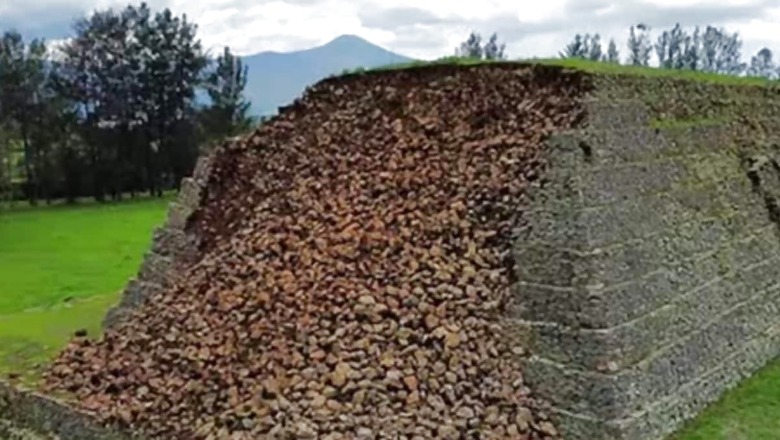
views
Two ancient structures in Mexico collapsed in nine days, leading to concerns among local tribes, who consider it a “bad omen”. After the Double Arch collapsed in Utah’s Glen Canyon National Recreation Area, a pyramid at Ihuatzio Archaeological Zone crumbled unexpectedly. The damage was severe as it affected both the interior and the walls of the pyramids.
Experts suggest natural causes as the reason for the collapse. Cracks allowed rain to enter the interiors of the Ihuatzio Archaeological Zone. The structure was built by ancestors of the Purepecha people, a tribe known for defeating the Aztecs.
A member of the tribe, Tariakuiri Alvarez, believes the collapse of the pyramids has supernatural reasons. According to Alvarez, it might be a sign of an upcoming disaster. Speaking with The Sun, he said, “For our ancestors, the builders, this was a bad omen that indicated the proximity of an important event. Before the arrival of the conquistadors, something similar happened, which for the Purepecha worldview of that time was because the gods Nana Kuerhaepiri and K’eri Kurikweri were displeased.”
Meanwhile, the Mexican National Institute for Anthropology and History (INAH) in a statement said, “A collapse occurred in the central part of the southern facade of one of the pyramidal bases of the Ihuatzio Archaeological Zone. This happened because of the heavy rainfall in the basin of Lake Pátzcuaro, with an accumulation above the expected average of precipitation. High temperatures, previously recorded in the area and the consequent drought caused cracks that favoured the filtration of water into the interior of the pre-Hispanic building.”
Beginning in the early hours of July 30, personnel moved to the heritage site to assess the damage caused, INAH said. Their observations confirmed the damage to at least six of the stepped bodies of the so-called South Base, both in its exterior wall of slabs, as well as in its core and retaining wall, the institute added.
“Damage assessment activities continue and are focused not only on recovering the affected part but also on thoroughly repairing the structure of the building. Work carried out in the past, using techniques and materials that are not currently in use due to their negative effects, has an impact on the conservation conditions of the pre-Columbian structure,” it further said.
The Ihuatzio Archaeological Zone, established around 900 AD, was the main structure for the Purepecha tribe, especially from the 13th to the 16th centuries. Their rule ended after Europeans invaded in the early 16th century. Despite their downfall, the pyramids remain one of the key archaeological sites in the area.




















Comments
0 comment